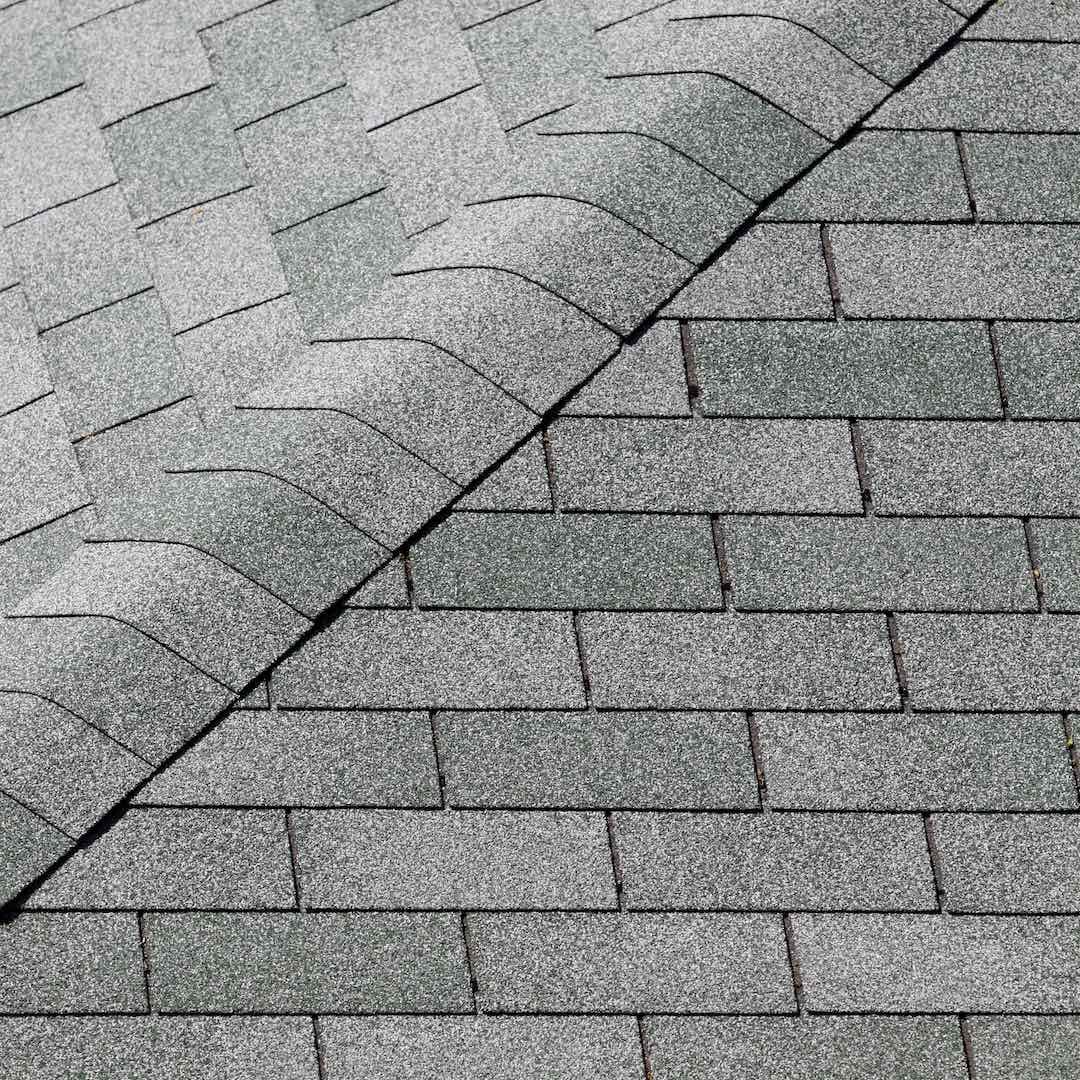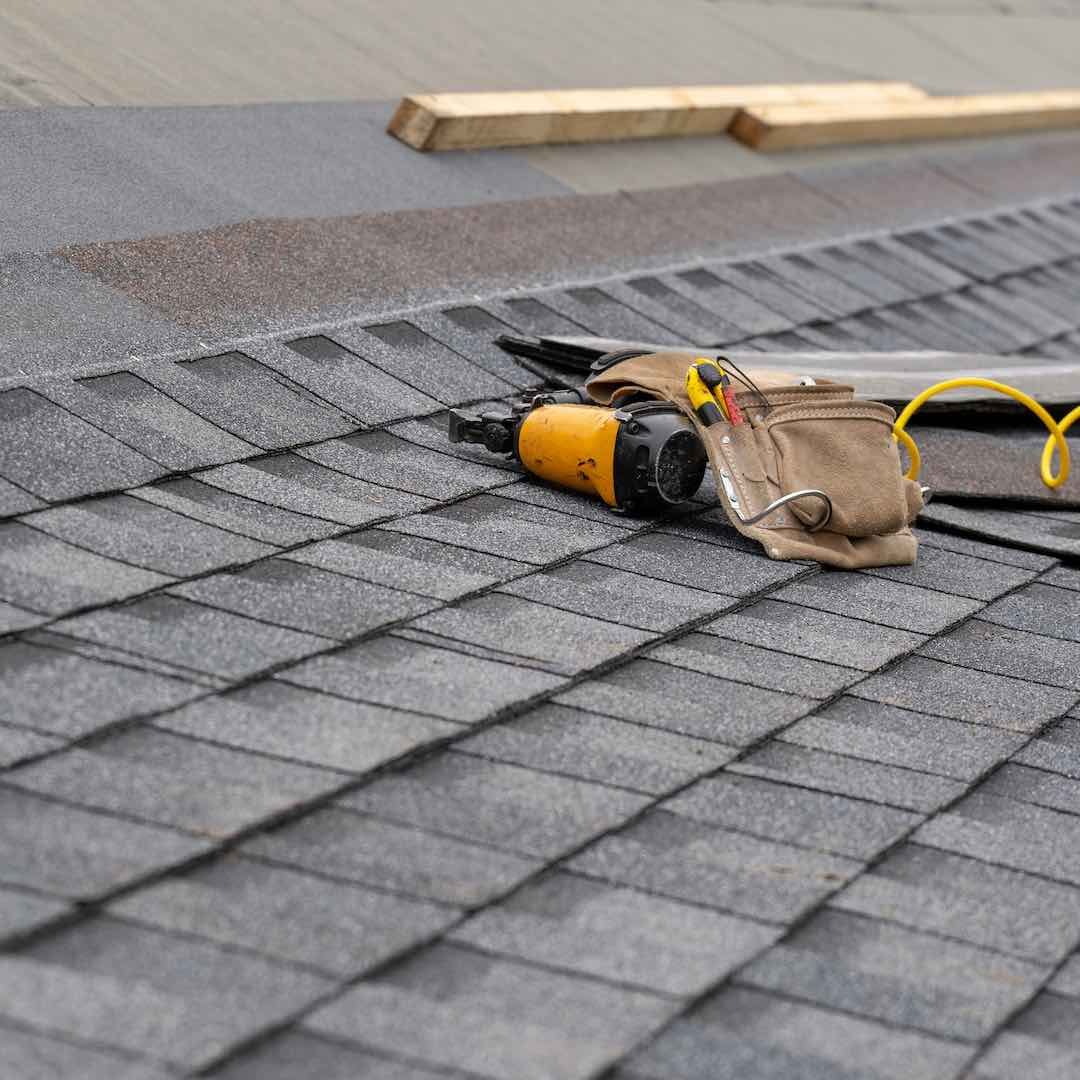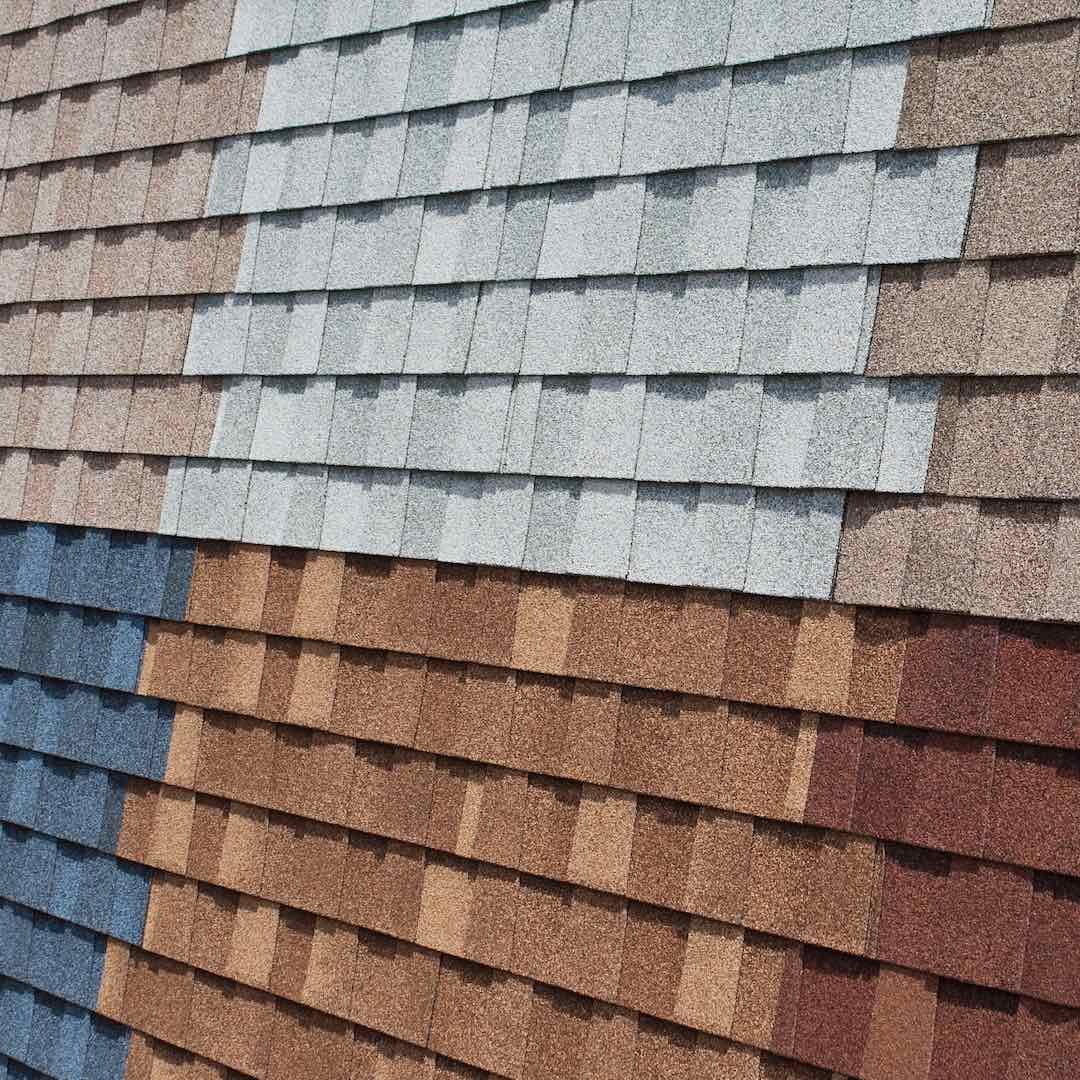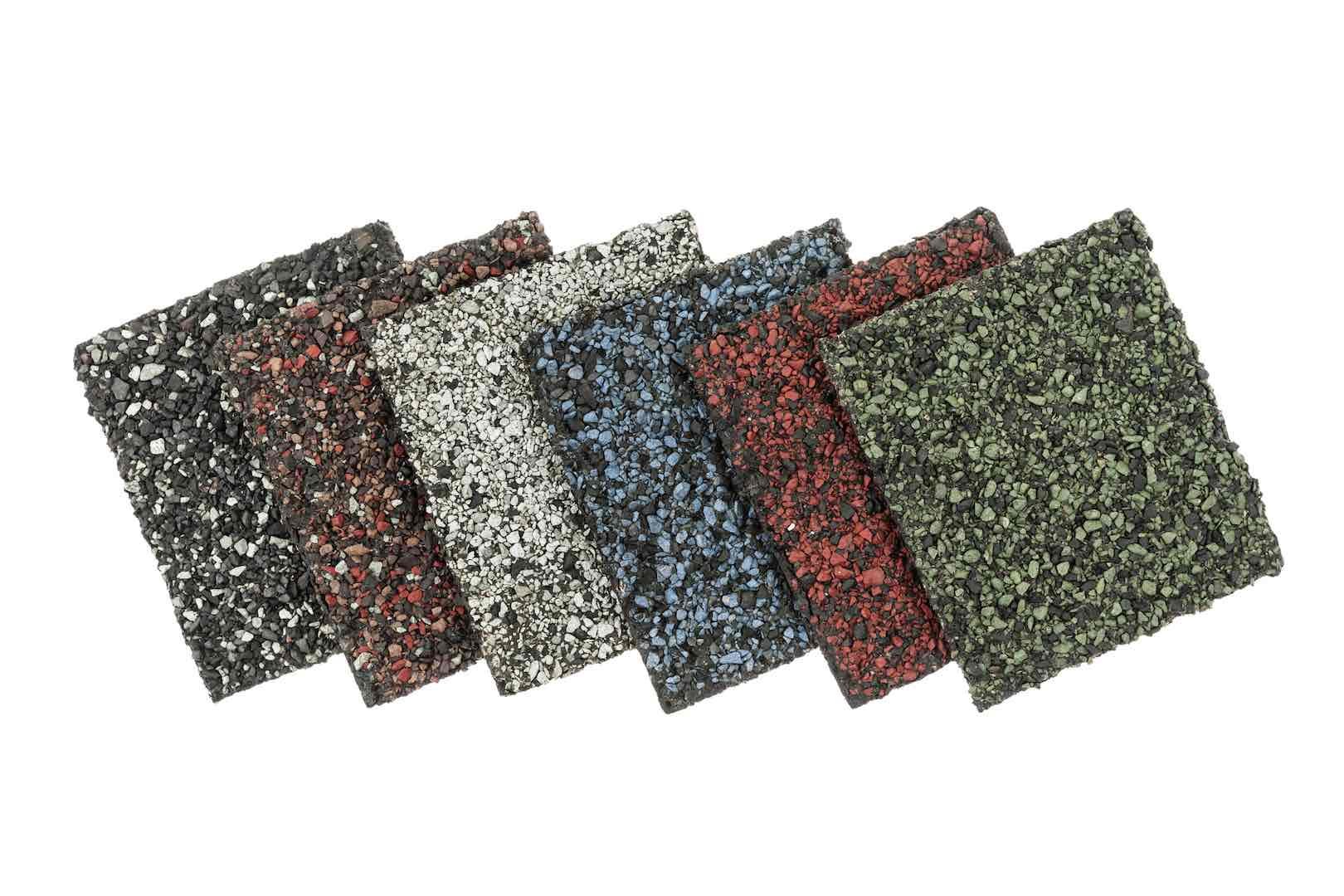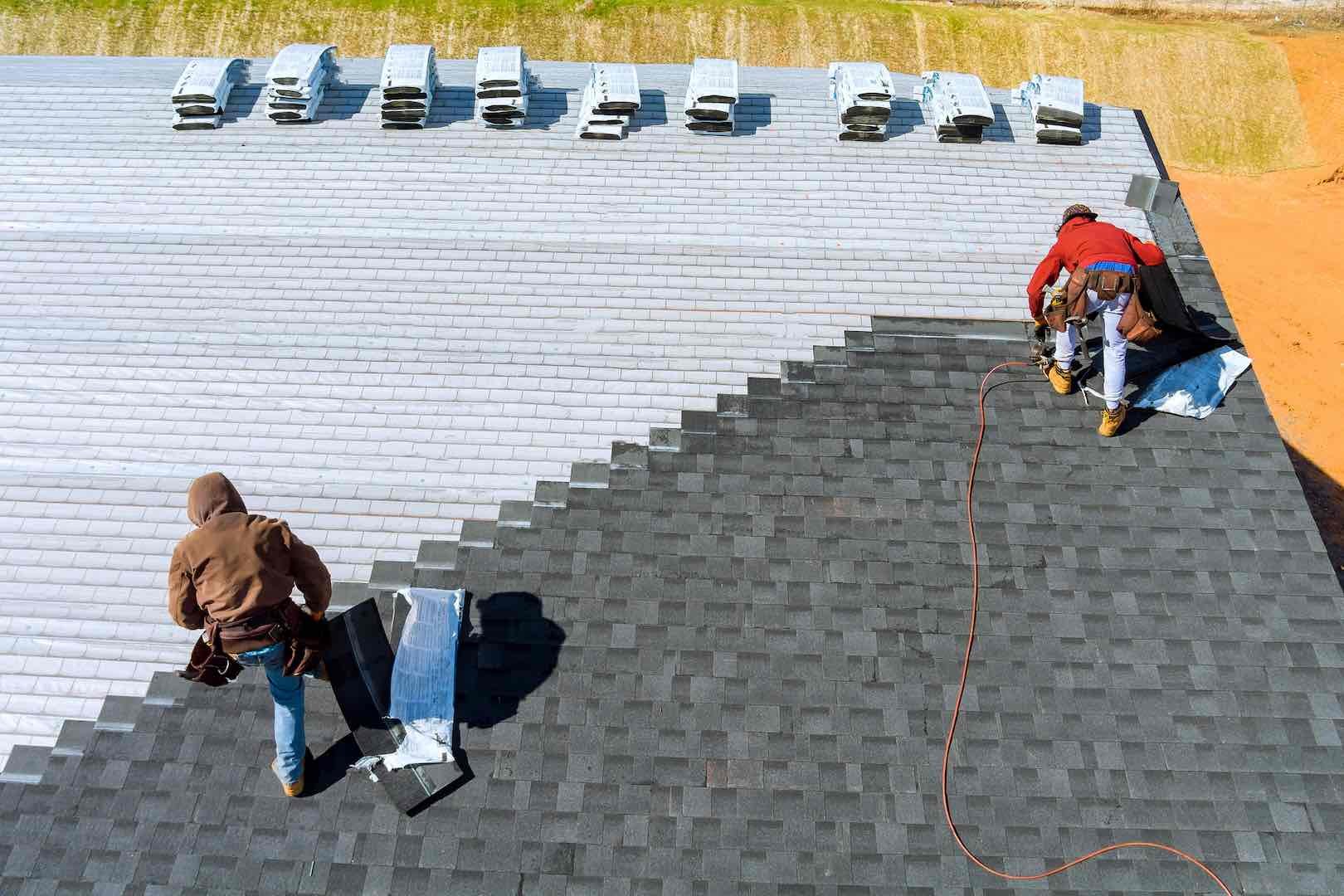Asphalt Shingle Installation Cost, Pros & Cons, and Material Types
Asphalt shingles are one of the most popular roofing materials in the United States. They are known for their affordability, durability, and versatility. Whether you're considering a roof replacement or building a new home, it's essential to understand the different types of asphalt shingles, the installation process, the pros and cons, and how much they cost. In this comprehensive guide, we'll provide you with all the information you need to make an informed decision about asphalt shingles.
What are Asphalt Shingles?
Asphalt shingles are roofing materials made of a fiberglass or cellulose mat, asphalt, and mineral granules. They are the most common type of roofing material in the United States, accounting for approximately 80% of residential roofs. Asphalt shingles are known for their affordability, versatility, and ease of installation. They come in a variety of styles and colors to suit different architectural designs and personal preferences.
Composition of Asphalt Shingles
Asphalt shingles are composed of several layers. The bottom layer is a mat made of fiberglass or cellulose, providing strength and stability to the shingle. On top of the mat, asphalt is applied as a waterproofing agent. Finally, granules made of minerals, such as ceramic or crushed rock, are embedded into the surface of the shingle to enhance its durability and protect it from UV rays.
Types of Asphalt Shingles
There are three main types of asphalt shingles: 3-tab asphalt shingles, architectural asphalt shingles, and luxury asphalt shingles.
3-Tab Asphalt Shingles
3-tab asphalt shingles are the most basic and economical option. They have a flat appearance and consist of a single layer with cutouts, giving the appearance of three separate shingles. While they are affordable, they have a shorter lifespan compared to other types of asphalt shingles, typically lasting between 15 to 20 years.
Architectural Asphalt Shingles
Architectural asphalt shingles, also known as dimensional or laminate shingles, are a step up from 3-tab shingles. They have a multi-dimensional appearance and consist of multiple layers of asphalt. This gives them a more textured and visually appealing look. Architectural shingles are thicker and more durable than 3-tab shingles, lasting between 25 to 30 years or more.
Luxury Asphalt Shingles
Luxury asphalt shingles are the highest quality and most expensive option. They are designed to mimic the look of natural materials like slate or wood shake. Luxury shingles are thicker, heavier, and provide enhanced durability and aesthetics. They can last up to 50 years or more with proper maintenance.
The Installation Process
Installing asphalt shingles requires specific steps to ensure a long-lasting and properly functioning roof. While it is possible to install asphalt shingles on your own, hiring a professional roofing contractor is recommended to ensure the job is done correctly and to avoid any potential issues in the future.
Asphalt Shingle Installation Steps
Preparation: The existing roof should be inspected and any necessary repairs or replacements should be made. The roof surface should be clean and free of debris.
Underlayment Installation: An underlayment, typically made of felt or synthetic material, is installed over the roof deck to provide an additional layer of protection against moisture.
Drip Edge Installation: A metal drip edge is installed along the eaves and rakes of the roof to prevent water from seeping under the shingles.
Starter Strip Installation: A starter strip, which is a row of adhesive-backed shingles, is installed along the eaves of the roof to provide a solid base for the first row of shingles.
Shingle Installation: Starting from the bottom edge of the roof, shingles are installed in overlapping rows. Nails are used to secure the shingles in place, following the manufacturer's guidelines for placement and quantity.
Flashing Installation: Flashing, which is made of metal or other waterproof material, is installed around roof penetrations, such as chimneys and vents, to prevent water leakage.
Ridge Vent Installation: If necessary, a ridge vent is installed along the peak of the roof to allow for proper ventilation and airflow.
Final Inspection: Once the installation is complete, a final inspection should be conducted to ensure the roof is properly installed and meets all necessary standards and regulations.
Hiring a Professional Roofing Contractor
While it is possible to install asphalt shingles on your own, hiring a professional roofing contractor has several advantages. They have the knowledge, experience, and equipment to ensure the installation is done correctly and efficiently. Professional contractors can also provide warranties on their workmanship and help you navigate any local building codes or regulations. When hiring a roofing contractor, consider their reputation, experience, and certifications. Request multiple quotes and compare their proposed timelines and costs before making a decision.
Pros of Asphalt Shingles
Asphalt shingles offer several advantages that make them a popular choice for homeowners. Here are some of the key benefits of asphalt shingles:
Affordability
One of the primary advantages of asphalt shingles is their affordability. They are significantly cheaper than other roofing materials like metal, tile, or slate. Asphalt shingles provide an excellent balance between cost and durability, making them an attractive option for budget-conscious homeowners.
Durability
Asphalt shingles are designed to withstand various weather conditions, including strong winds, rain, and hail. Depending on the type of asphalt shingles you choose, they can have a lifespan of 20 to 50 years. Architectural and luxury shingles tend to be more durable and have longer lifespans compared to 3-tab shingles.
Wide Range of Colors and Styles
Asphalt shingles come in a wide variety of colors and styles, allowing homeowners to choose a design that complements their home's architecture and personal taste. Whether you prefer a traditional look or want to mimic the appearance of natural materials like wood or slate, there is an asphalt shingle option to suit your preferences.
Easy Installation and Maintenance
Compared to other roofing materials, asphalt shingles are relatively easy to install. They are lightweight, making them easier to handle and transport. Additionally, the installation process is straightforward, especially for experienced roofing professionals. Asphalt shingles also require minimal maintenance. Regular inspections, cleaning, and occasional repairs are typically sufficient to keep your roof in good condition.
Cons of Asphalt Shingles
While asphalt shingles offer many benefits, there are also some drawbacks to consider. Here are the main disadvantages of asphalt shingles:
Environmental Impact
Asphalt shingles are not the most environmentally friendly roofing option. They are made from petroleum-based materials and can contribute to landfill waste when replaced. However, some manufacturers offer recycling programs for asphalt shingles, allowing them to be reused or repurposed. Additionally, advancements in technology have led to the development of more sustainable and eco-friendly asphalt shingles.
Lifespan and Vulnerability to Weather Conditions
While asphalt shingles are durable, their lifespan can be affected by extreme weather conditions. In areas with high temperatures or frequent hailstorms, the lifespan of asphalt shingles may be shorter. Additionally, inadequate installation or poor maintenance can lead to premature deterioration or damage.
Limited Insulation Value
Compared to other roofing materials like metal or tile, asphalt shingles have limited insulation value. They provide some thermal protection but may not be as effective in reducing heat transfer or improving energy efficiency. If insulation is a major concern, additional insulation materials or roofing options should be considered.
Types of Asphalt Shingles
As mentioned earlier, there are three main types of asphalt shingles: 3-tab asphalt shingles, architectural asphalt shingles, and luxury asphalt shingles. Understanding the differences between these types can help you choose the right option for your home.
3-Tab Asphalt Shingle
3-Tab Asphalt Shingles
3-tab asphalt shingles are the most basic and commonly used type of asphalt shingles. They have a simple, flat appearance and consist of a single layer with cutouts along the lower edge, giving the appearance of three separate shingles. 3-tab shingles are lightweight, affordable, and suitable for most residential roofing applications.
Architectural Asphalt Shingles
Architectural asphalt shingles, also known as dimensional or laminate shingles, are a step up from 3-tab shingles in terms of durability and aesthetics. They have a multi-dimensional appearance, with multiple layers and no cutouts. This gives them a more textured and visually appealing look, resembling the appearance of wood or slate. Architectural shingles are thicker, heavier, and offer improved wind resistance and longevity.
Luxury Asphalt Shingles
Luxury asphalt shingles are the highest quality and most expensive option. They are designed to mimic the appearance of premium roofing materials like slate or wood shake. Luxury shingles are thicker, heavier, and have a greater number of layers compared to other types of asphalt shingles. They offer enhanced durability, aesthetics, and weather resistance, making them a popular choice for homeowners seeking a high-end look.
Choosing the Right Asphalt Shingle Color
The color of your asphalt shingles can have a significant impact on the overall look of your home. When choosing a shingle color, consider the following factors:
Factors to Consider
Architectural Style: The architectural style of your home should guide your color choice. Traditional homes often pair well with neutral or earth tone shingles, while contemporary homes can handle bolder or contrasting colors.
Climate: Consider the climate in your area. Light-colored shingles reflect heat and are suitable for hot climates, while dark-colored shingles absorb heat and are better for colder climates.
Neighborhood Restrictions: Some neighborhoods or homeowner associations have restrictions on the colors of roofing materials. Check with local regulations to ensure compliance.
Popular Asphalt Shingle Colors
Asphalt shingles come in a wide range of colors, allowing you to find the perfect match for your home. Popular color options include:
Pale Gray
Medium Gray
Dark Gray
Beige
Red
Medium Brown
Dark Brown
Blue
Blue-Green
Using Online Tools to Visualize Colors
To help visualize how different shingle colors will look on your home, many manufacturers and roofing contractors offer online tools or apps. These tools allow you to upload a photo of your home and experiment with different shingle colors and styles, helping you make an informed decision.
Asphalt Shingle Cost
The cost of asphalt shingles can vary depending on several factors, including the type of shingle, the size and complexity of the roof, and the region in which you live. Understanding the cost factors can help you budget for your roofing project.
Factors Affecting the Cost
Type of Shingle: 3-tab shingles are the most affordable option, while architectural and luxury shingles are more expensive due to their increased durability and aesthetic appeal.
Roof Size: The size of your roof is a major cost factor. Larger roofs require more materials and labor, resulting in higher costs.
Roof Complexity: Roofs with multiple angles, slopes, and features like skylights or chimneys require additional labor and materials, increasing the overall cost.
Location: The cost of living and labor rates can vary depending on your location. Prices may be higher in urban areas or regions with higher demand for roofing services.
Average Cost of Asphalt Shingles
On average, the cost of asphalt shingles ranges from $1.71 to $6.12 per square foot, including materials and installation. For a standard 3,000 square foot roof, the total cost can range from $5,130 to $18,360. Keep in mind that this is a starting cost, and additional factors like removal of the old roof, underlayment, and additional materials can increase the overall cost.
Additional Costs to Consider
When budgeting for your asphalt shingle roof, consider the following additional costs:
Removal of Old Roof: If you have an existing roof that needs to be removed, expect additional costs for the labor and disposal of the old materials.
Underlayment and Accessories: Underlayment materials, such as felt or synthetic membranes, are necessary for proper roof installation. Additional accessories like drip edge, flashing, and vents may also be required.
Warranties: Some manufacturers offer extended warranties for their asphalt shingles, which may come with an additional cost. Consider the value of the warranty and the peace of mind it provides.
It is recommended to obtain multiple quotes from reputable roofing contractors to get a more accurate estimate for your specific project.
Related Reading
Maintenance Tips for Asphalt Shingles
Proper maintenance is essential to ensure the longevity and performance of your asphalt shingle roof. Here are some maintenance tips to keep in mind:
Regular Inspections
Schedule regular inspections of your roof, ideally once or twice a year. Look for signs of damage, such as cracked or missing shingles, loose or damaged flashing, or signs of leaks. Address any issues promptly to prevent further damage.
Cleaning and Preventing Algae Growth
Algae can grow on asphalt shingles, causing unsightly staining and potential damage. To clean your roof, use a soft-bristle brush or low-pressure power washer to remove dirt and debris. Avoid using harsh chemicals or high-pressure washing, as they can damage the shingles.
To prevent algae growth, install zinc or copper strips along the ridge of your roof. When it rains, these metals release ions that inhibit algae growth.
Repairing Damaged Shingles
If you notice any damaged or missing shingles, make repairs as soon as possible. Replace any cracked, curled, or blistered shingles to prevent leaks and further damage. It is recommended to hire a professional roofing contractor for complex repairs or if you are unsure of how to proceed.
Energy Efficiency and Green Options
As energy efficiency and sustainability become increasingly important, manufacturers have developed energy-efficient asphalt shingles. These shingles are designed to reflect more sunlight, reducing heat transfer and keeping your home cooler. Energy-efficient asphalt shingles can help lower your energy bills and reduce your carbon footprint.
Additionally, some manufacturers offer recycling programs for asphalt shingles. Instead of sending old shingles to the landfill, they can be recycled and used in the production of new asphalt or paving materials. Recycling asphalt shingles helps reduce waste and promotes a more sustainable approach to roofing.
Conclusion
Asphalt shingles are a popular and affordable roofing option for homeowners. They offer durability, a wide range of colors and styles, and easy installation and maintenance. By understanding the different types of asphalt shingles, the installation process, the pros and cons, and the cost factors, you can make an informed decision about whether asphalt shingles are the right choice for your home.
When considering asphalt shingles, take into account the climate and architectural style of your home, as well as the desired lifespan and environmental impact. By choosing the right type and color of asphalt shingles, hiring a professional roofing contractor, and properly maintaining your roof, you can enjoy a beautiful and long-lasting roofing solution for your home.
Remember to obtain multiple quotes from reputable roofing contractors, educate yourself about local building codes and regulations, and explore energy-efficient and sustainable options when choosing asphalt shingles for your home. With proper care and maintenance, your asphalt shingle roof can provide years of protection and enhance the overall value and curb appeal of your home.


